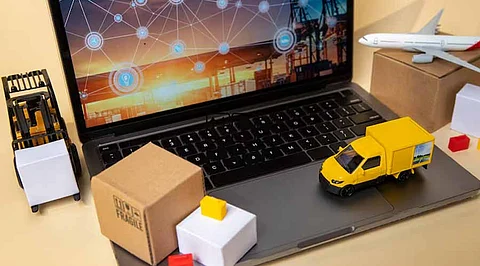

Successful industrial transport is no easy feat. Moving bulky materials and heavy equipment, like railcars or machinery, across hundreds or thousands of miles requires a sophisticated approach to logistics.
Recent upgrades to logistics technology have made this process easier, ensuring timely deliveries to help businesses stay on track with their objectives.
Read on to learn how smart logistics tech is enhancing everything from route tracking to safety with industrial transport.
Traditional, time-intensive practices defined industrial logistics for generations. Fleet managers have relied on paper documentation and best guesses to determine when critical equipment might arrive at its destination.
It’s been too easy for details to get lost in the process, and without real-time fleet tracking, managers have had to wind through a patchwork system to determine why a shipment was delayed.
Today, digital transformations have enhanced transparency and reliability in heavy shipping. Assets like cloud-based fleet tracking and IoT sensors enable workers in the industry to feel more confident about seamless shipping experiences.
And this is particularly true for those in railroad transportation, an industry where shipping railroad cars is central to their work. Using tools like AI or sensors to improve route planning has been a game-changer.
For fleet managers overseeing industrial transport, the stakes have never been higher. Timely shipments mean that businesses can meet consumer needs, and delayed shipments could translate to lost revenue and trust.
That’s where cloud-based fleet tracking has entered the fold as a premium innovation, enabling managers to see real-time details about every shipment. With user-friendly dashboards that pull information from countless IoT sensors and GPS data, managers can gain a more complete picture of their operations.
Real-time data alerts managers to recurring glitches in routes that could be costly. And managers can track performance and compliance of given deliveries with just the press of a button.
Even better, as managers try to square results with their business plan objectives, they can generate reports that map data, illustrate performance, and offer accountability. Stakeholders at all levels can share and see information, ensuring that shippers and warehouse teams are prepared for incoming deliveries.
Internet of Things (IoT) sensors are the centerpiece of today’s enhanced tracking systems. It’s simple to mount these sensors to any item being shipped, including railcars and trucks, to track their progress on a route. IoT sensors can even check temperatures and humidity on more sensitive shipments.
And for bumpy rides, sensors can trigger alerts that allow managers to stop a route and investigate the cause before shipments endure any damage and businesses lose money.
As fleet managers work to maintain equipment and optimize performance, sensors provide critical insights and alerts.
Plotting efficient routes is another essential piece of any fleet manager’s job. And artificial intelligence (AI) is making that effort easier and better.
Managers don’t have to make assumptions or guesses anymore regarding traffic conditions or other potentially disruptive elements. Instead, they can use AI-powered systems to monitor traffic, weather, and other factors in real time.
Concerning railcar deliveries, for example, AI can read data to predict track traffic patterns to minimize delays. And in any situation where oversized or unique cargo, like military vehicles or large generators, is being transported, AI can evaluate challenges like route clearance or bridge load capacities.
That way, managers won’t be surprised by logistical problems, and they can stay compliant with regulations.
Further, AI can flag vehicles for maintenance checks to help make sure fleets are always up and running. Routine maintenance can extend the lifespan of even older fleet vehicles. With automated reminders and ongoing data set analyses, AI has become a vital tool to help fleets plan the best routes.
Smart logistics tech is giving fleet managers confidence and control in a sector with high expectations. Thanks to real-time sensor data and AI’s ability to analyze that data, managers can optimize routes and operations, improving communication and generating better results.
Supply chains can be more predictive and avoid disruptions that would have been more common even a decade ago. Being able to adapt and shift assets as necessary helps maintain safer and more reliable transport services. And for industrial organizations that need large-scale transport to run their businesses, smart logistics tech is the foundation for their work.
